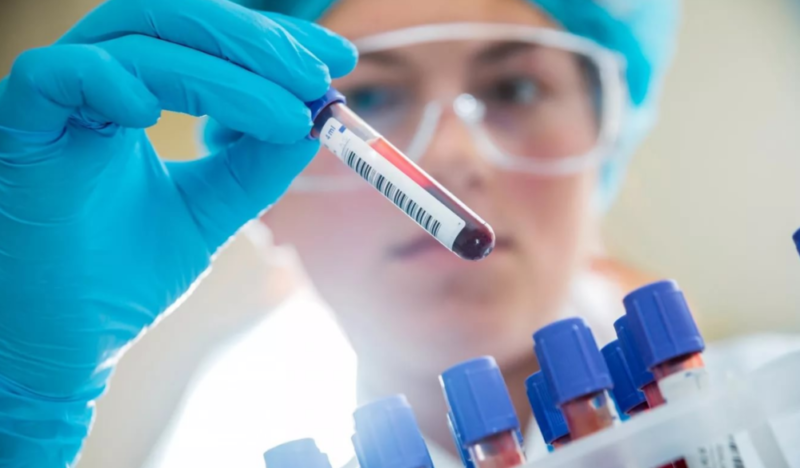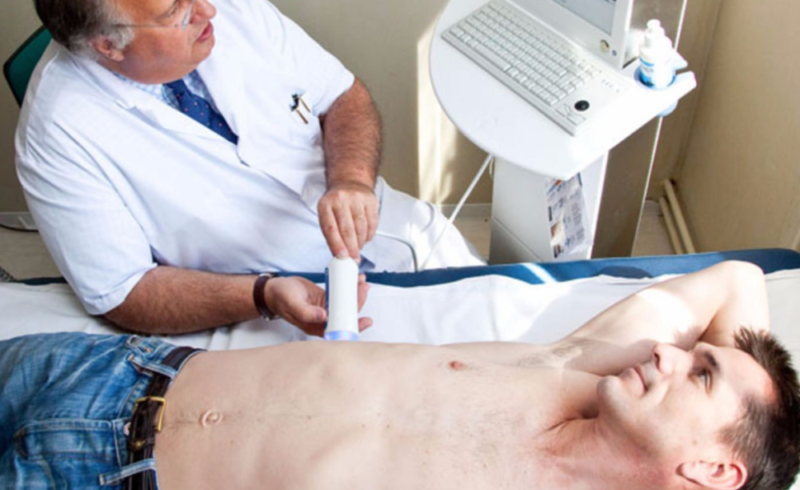Alcoholic hepatitis is a real scourge of modern society, a serious problem that affects people of different sexes and ages. The aforementioned ailment is characterized by a peculiar "cunning", because the symptomatology of the pathology developed through the fault of alcoholic libations is not always obvious. How to track alcoholic hepatitis, and what methods to deal with it?
Material Content:
What is alcoholic hepatitis
Alcoholic hepatitis is called toxic liver damage, accompanied by fibrosis, inflammation and fatty degeneration of the specified organ.
The ongoing detrimental effect on the liver of ethanol as part of alcohol transforms hepatitis into cirrhosis, combined with irreversible processes.
Only a fraction of the alcohol that enters the body (about 20%) is processed by the digestive tract and excreted through the lungs. The remaining amount of alcohol is in the liver. It is here that the drunk alcohol is transformed into acetaldehyde. This toxin accumulates in the cells of the liver and, subject to the abuse of alcohol, gradually contributes to its destruction.
Alcoholic hepatitis is chronic and acute.
Causes and Risk Factors
Alcoholic hepatitis is recognized as a negative consequence of alcohol abuse. The severity of the pathology depends on the quality of the alcohol used, the duration of its administration and dosage, and a number of features of the patient's body.
Alcoholic hepatitis in men can develop with daily use of 60-80 ml of alcohol. For women, this figure is 30-40 ml, for adolescents - 15-25 ml.
The likelihood of alcoholic hepatitis is increased in people exposed to specific changes in the enzymes responsible for metabolism, as well as those with a history of viral hepatitis. An indirect cause of this pathology is the deficiency of nutrients.
Symptoms and forms of the disease
There are acute and chronic alcoholic hepatitis. The first is monitored in almost 70% of cases of alcohol abuse, gradually transforming into cirrhosis. Allocate latent, icteric cholestatic and fulminant acute hepatitis.
There are also progressive and persistent hepatitis. The second form is recognized as stable, and after the cessation of alcohol exposure, the affected liver cells are able to recover. But if exposure to ethanol continues, the ailment begins to progress.
A progressive form of pathology is divided into mild, moderate and severe. Under the condition of timely therapy, the process is stabilized, but the residual effects persist.
Symptoms of Alcoholic Hepatitis
Symptoms of alcoholic hepatitis are caused by disease variations. Latent hepatitis is characterized by an attrition of symptoms. The patient notes mild nausea, a certain heaviness in the right hypochondrium. This variant of the pathology is detected exclusively in laboratory diagnostics.
The most common is the icteric form.
Its typical signs are:
- weakness;
- anorexia;
- hyperthermia;
- diarrhea;
- yellowing of the skin;
- weight loss;
- vomiting, nausea;
- enlarged liver, pain on palpation.
Cholestatic hepatitis is less commonly monitored than other ailments. Its basic symptoms are dark urine and a too light shade of feces, jaundice.
Fulminant hepatitis is characterized by a change in laboratory parameters, progressive hemorrhagic syndrome.
Diagnosis
Diagnosing alcoholic hepatitis is often difficult. An ailment proceeding in a mild form is sometimes not accompanied by characteristic symptoms, and therefore only laboratory tests often help to find it.
Laboratory signs of acute alcoholic hepatitis - accelerated ESR, leukocytosis.
Ultrasound helps to identify the size of the body, its structure and contours. A chronic ailment is characterized by an increase in the liver, high echogenicity and a homogeneous structure. MRI of the liver monitors the blood flow of the organ, possible additional damage to the pancreas. Traces of necrosis, fibrosis, or inflammation can be determined by a liver biopsy.
Ongoing laboratory examinations should be combined with a medical history to help track the duration of alcohol use. The latter task is often difficult, because the specialist does not always get access to such information. It is for this reason that it is best to involve the closest relatives of the patient in the diagnosis and treatment of alcoholic hepatitis, since the latter is able to deliberately underestimate or withhold information about the amount of alcohol he drinks.
An external examination can also tell a lot to the specialist. So, for those suffering from alcohol dependence, sometimes tremor of the hands, damage to the central nervous system and internal organs.
Toxic hepatitis treatment
The basic treatment for alcoholic hepatitis is to finish drinking alcohol. Without observing this condition, the pathology will continue to progress. Often, giving up alcohol is enough to trigger the liver renewal mechanism at the onset of the disease.
As for the drug therapy of the disease, it involves the use of essential phospholipids. The latter help reduce liver changes and create an antioxidant effect. Also recommended are preparations of ursodeoxycholic acid and hepatoprotectors. The latter help block the production of acetaldehyde and prevent damage to the liver cells.
Therapy of the acute form of the disease involves a detoxification effect, including the introduction of plasma-substituting solutions. Severe course of the disease involves the connection of glucocorticosteroids. The chronic form is treated by connecting medications that eliminate the process of organ fibrosis (interferon, glycine, etc.).
Diet for the disease
The approximate nutritional value of the patient’s daily diet is 2000 calories with a total protein intake of 1 g per 1 kg of body weight.
Diet therapy for alcoholic hepatitis consists in eating 5-6 times a day.
Rough, smoked, spicy, fried foods should be excluded from the menu. The amount of salt should not exceed 3 g per day.
The diet should include such products:
- fish, meat;
- vegetables;
- milk products;
- sunflower seeds;
- fruits;
- buckwheat.
The patient should eat a little, but often (5-6 times a day). It is not recommended to combine proteins and carbohydrates, fruits are best consumed separately from other products.
The patient should receive a sufficient amount of fatty acids and vitamins daily. Parenteral (intravenous) or tube feeding is recommended for patients suffering from anorexia (by introducing a special tube into the stomach cavity). This method of feeding is also recommended when the patient is disgusted with food.
Complications and consequences
Companions of alcoholic hepatitis in some cases are the following complications:
- fibrosis, sclerosis of the liver;
- ascites;
- encephalopathy;
- liver cancer;
- pneumonia;
- peritonitis (rare);
- liver abscess
- sinusitis;
- cirrhosis of the liver;
- sepsis;
- renal failure.
To prevent the development of concomitant hepatitis diseases, a timely diagnosis should be made and treatment should begin.
Life forecast
Alcoholic hepatitis is typically slow in development - a person who abuses alcohol may not even notice it. At an early stage, the liver fights acetaldehyde on its own. But little by little the resources of the organ are wasted, and the liver cells are massively killed, which provokes liver failure and cirrhosis.
The prognosis depends on the severity of liver damage. Refusal of alcohol and timely therapy often lead to a stage of persistent remission. The most unfavorable is the transformation of hepatitis into cirrhosis. The most radical method of therapy in such cases is a liver transplant. This procedure is very expensive, but the main problem is not even financial. Finding a donor for a liver transplant is extremely difficult. An ideal option for the patient will be the donation of his close relative. The rehabilitation period after organ transplantation lasts quite a long time. Throughout the recovery period, the patient is charged with taking immunosuppressants to prevent liver rejection.
On a note. If alcoholic hepatitis is at a late stage, the patient is shown to stop taking alcohol in order to prevent the final breakdown of the liver. Even people with persistent organ damage have a much greater chance of survival compared to those who have not quit addiction.
Prevention of alcoholic hepatitis
It is impossible to “catch” alcoholic hepatitis by drinking dirty water for drinking, visiting a dentist or beauty salon. This disease is not considered viral, and it depends on the patient whether his liver will be affected. For this reason, a sober lifestyle is considered the main way to prevent the disease. And for people prone to alcohol abuse, systematic medical observation is recommended.
The development of "alcoholic" hepatitis, unlike other varieties of this disease, is completely dependent on the person affected by the disease. Most often, to eliminate the main symptoms at an early stage of this pathology, it is enough to stop drinking alcohol.Those patients who find it difficult to enforce such restrictions are likely to need the help of a number of specialists: a psychologist, a narcologist, and so on.






















